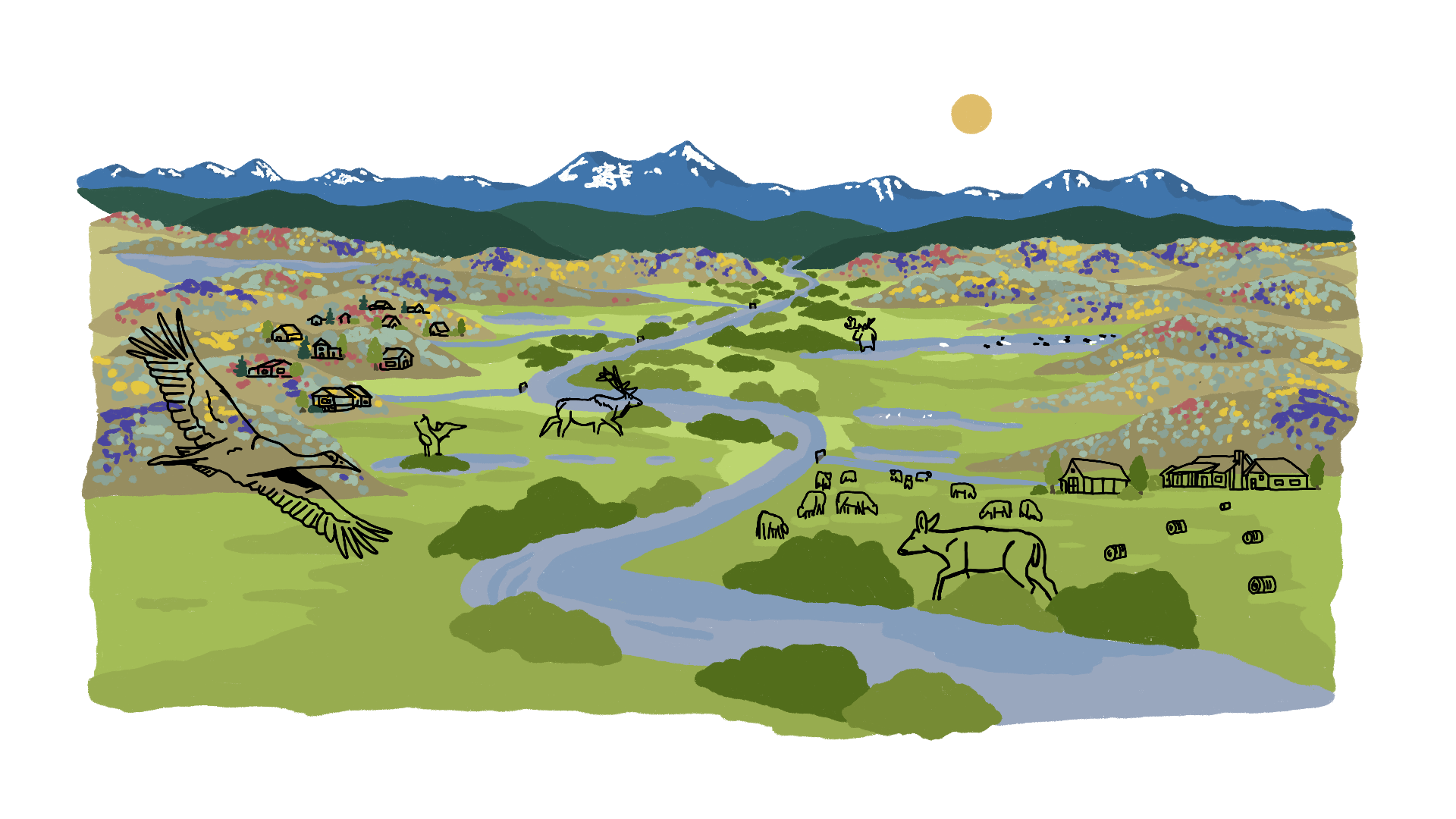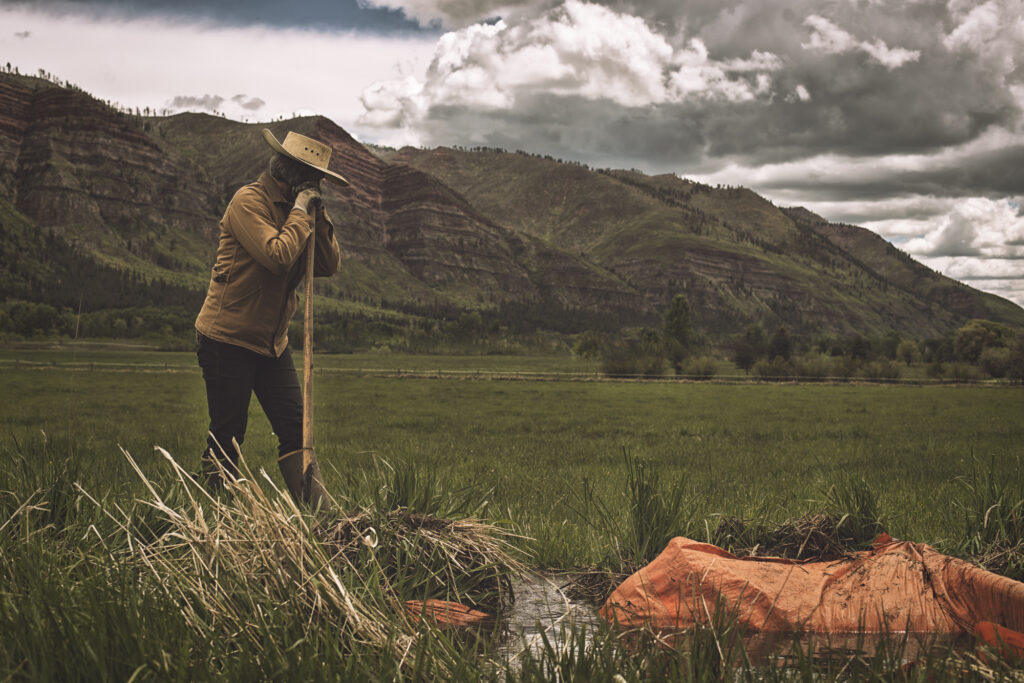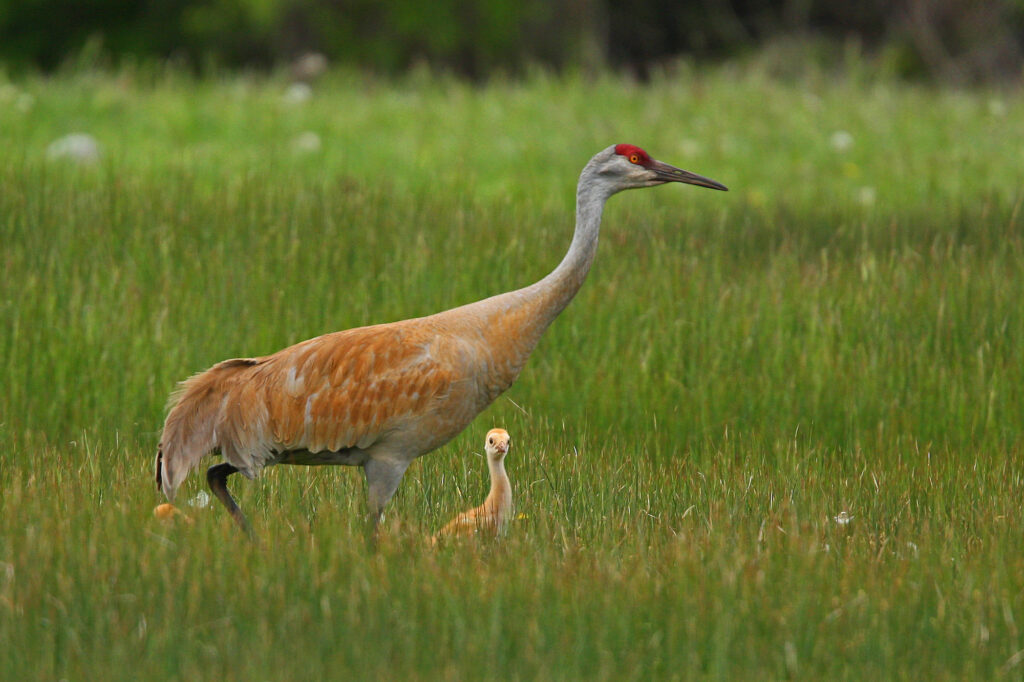Riparian corridors are lifelines for the wildlife and communities of the Intermountain West. These corridors are home to many of the region’s wetlands and are sustained by seasonal water cycles. This means that the wildlife that depends on wetlands, from migratory waterbirds to big game animals, can often be found using riparian areas.
Much of this wetland habitat is sustained by flood-irrigated grass hay practices used by the region’s ranchers. Ninety-three percent of flood-irrigated grass hay agriculture (read: raising forage for livestock) occurs in historical riparian footprints and mimics natural flooding cycles. As a result, this ranching practice is deeply tied to wetland function in these systems, providing ecosystem services that promote climate resilience and wildlife benefits.
A new illustrated video breaks down recent science that shows how flood-irrigated grass hay practices in the Intermountain West provide vital wetland habitat for migratory birds. The video also explains how the riparian wetlands created by this agricultural practice can benefit fisheries and other wildlife, people, and overall watershed resiliency.



